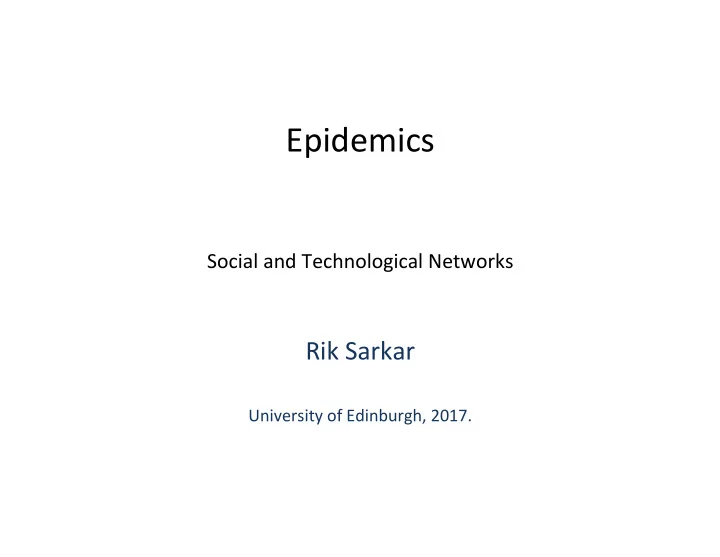

Epidemics Social and Technological Networks Rik Sarkar University of Edinburgh, 2017.
Spread of diseases • PaEern depends on network structure • e.g. spread of flu • Network of people • Network of airlines • Different from idea/innovaJon contagion – Does not need a “decision” – Does not need mulJple support • InfecJous disease passes easily with some probability
• Suppose everyone meets k new people and infects each with probability p • That is, they infect R = kp people on average
• If p is high • The disease will persists through rounds • If p is low, it will die out aOer some rounds
Property • When R > 1 number of infected people keeps increasing – Outbreak • When R < 1 Number of infected people decreases – Disease dies out • Phase transiJon at R = 1 • assuming there are enough “new” people supply to meet • Generally true in the iniJal stages
• Around R = 1: small efforts can have large effects on epidemic – Awareness causing slight decrease in p – QuaranJne/fear causing slight decrease in k
SIR Model • SuscepJble (iniJally) • InfecJous (aOer being infected) – While InfecJous, it can pass disease to each neighbor in each step with prob. p • Removed (aOer given duraJon as InfecJous) – Immune/dead
SIS model • No “Removed” state. SuscepJble follows InfecJous
SIRS model • SuscepJble • InfecJous • Recovered (immune) • SuscepJble
SIRS oscillaJons in WaEs-Strogatz Small worlds • Nodes connected to few nighbors on a ring • FracJon c of links modified to connect to random nodes
Epidemic or gossip algorithm • Emulates the spread of epidemic or a rumor in a network • A node speaks to a random neighbor to spread the rumor message • Useful for spreading informaJon in computer networks
Recommend
More recommend